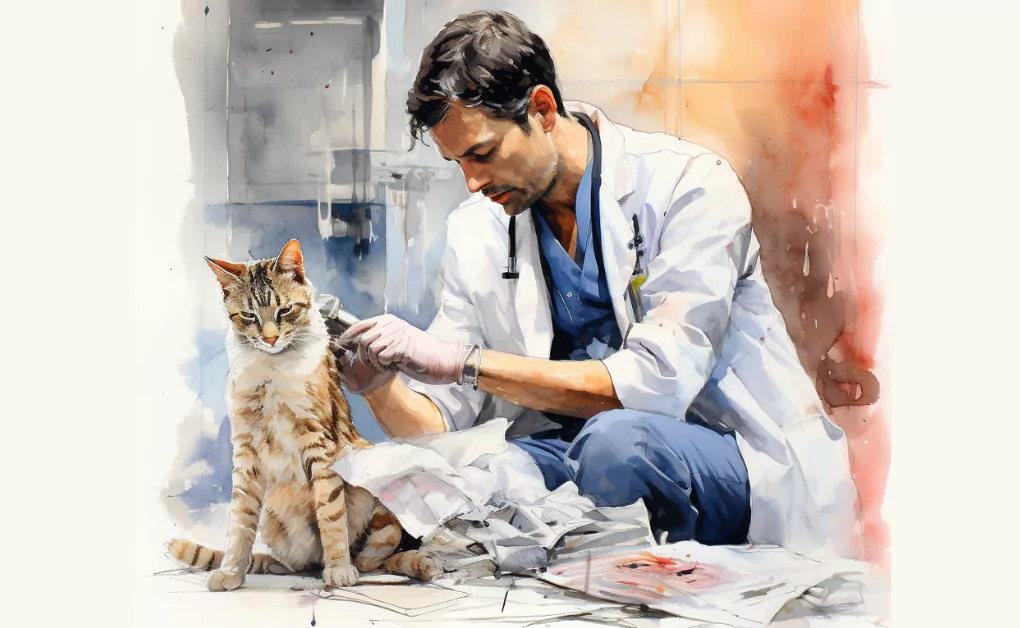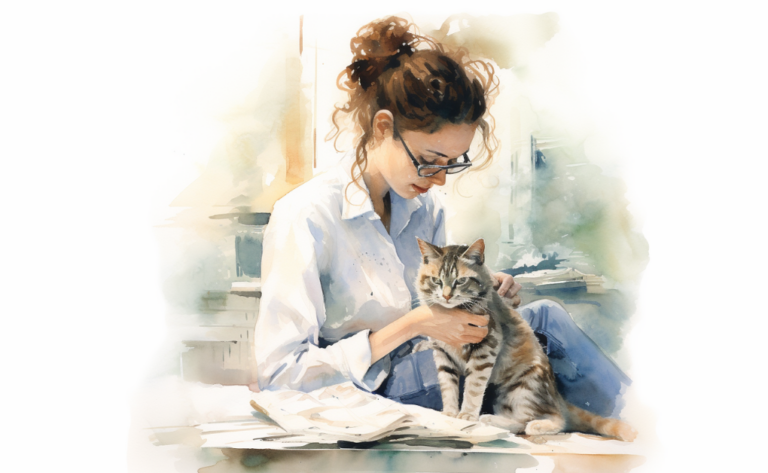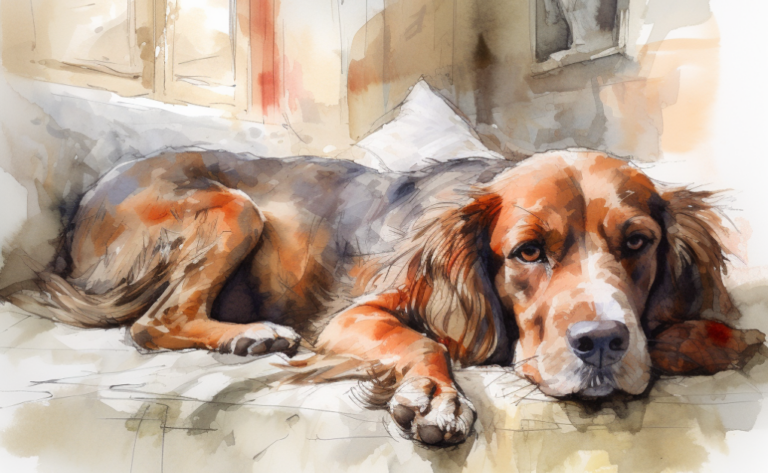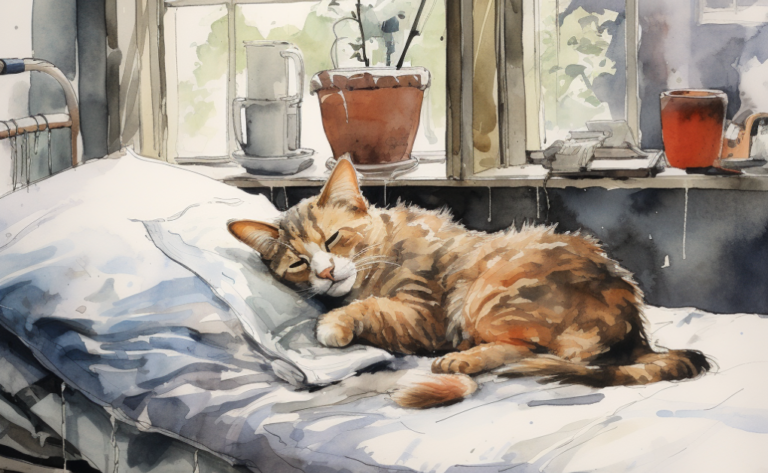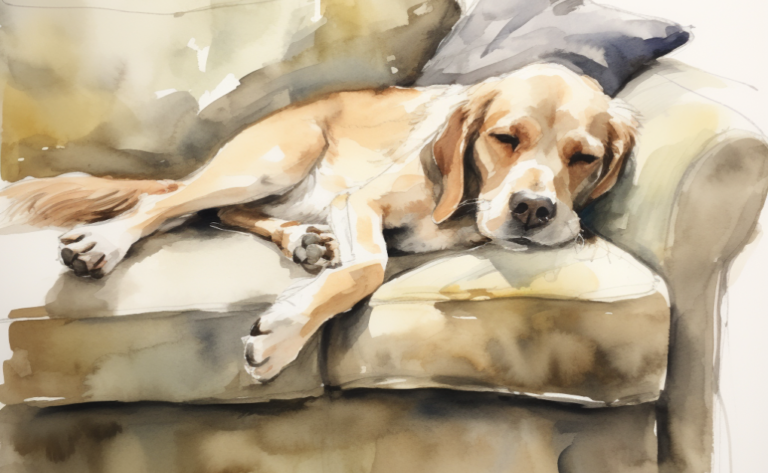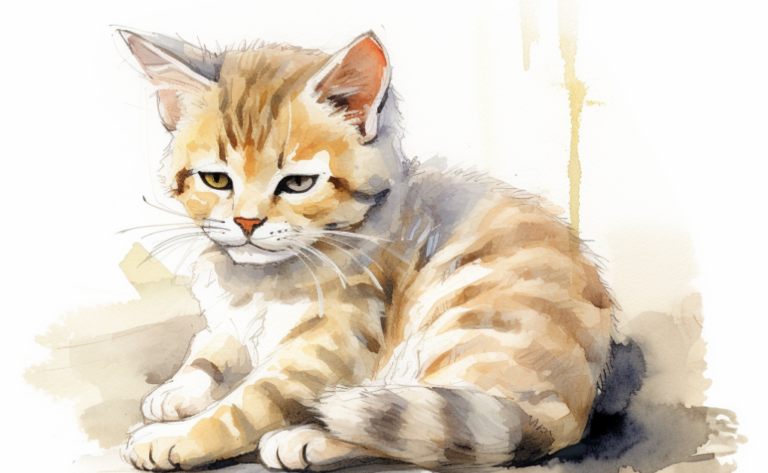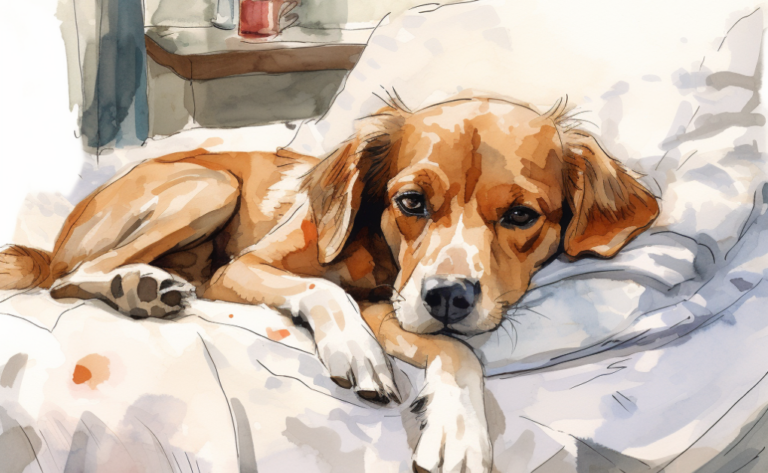What are Common Emergencies in Cats
What is it?
How is it Treated?
Breed Predispositions
Siamese Persians Maine Coons Bengal Sphynx Ragdoll
Introduction
Late one evening, Karen noticed her usually playful Siamese cat, Whiskers, acting lethargic and refusing to eat. Concerned about her beloved pet’s sudden change in behavior, Karen decided to take Whiskers to the local emergency veterinary clinic for an urgent assessment. Upon arrival, the veterinarian quickly identified that Whiskers was indeed experiencing a critical health crisis.
Common cat emergencies include a broad spectrum of severe conditions and abrupt illnesses that necessitate immediate veterinary emergency intervention. Like all pets, cats can find themselves in various emergencies. Understanding the signs of these emergencies can make the difference between life and death for your feline friend, making critical care an essential part of cat ownership.
These emergencies may affect different parts or systems within the cat’s body and can vary in their degree of severity. It should be noted that cats are notorious for hiding their symptoms, so keen observation is vital. In particular, a male cat may encounter unique emergencies related to its reproductive system. Recognizing a life-threatening emergency in its early stages can be instrumental in ensuring your cat’s survival.
Trauma
Trauma represents a substantial segment of emergencies in cats, incorporating a variety of injuries stemming from physical damage or force. These injuries can originate from external incidents such as mishaps, tumbles, or attacks from other animals, or they could be due to internal triggers like sudden health issues causing physical discomfort. It’s vital to realize that trauma in cats can pose just as much of a life-threatening risk as any illness and often warrants immediate veterinary emergency care.
- Car Accidents: Incidents involving vehicles are a prevalent cause of trauma in cats, particularly those with access to the outdoors. Such mishaps can result in many injuries, including fractures, dislocations, internal bleeding, lung damage, or shock. If a vehicle has hit your cat, seeking veterinary help is critical.
- Falls: The phenomenon known as “high-rise syndrome,” where cats fall from significant heights, is particularly common amongst cats living in urban areas. The consequences of these falls can range from minor grazes and contusions to more serious conditions like fractured bones, cranial trauma, or damage to internal organs.
- Animal Attacks: Cats can experience trauma from confrontations with other animals. Suppose your cat has a broken skin surface due to bites and scratches from such encounters. In that case, it can lead to penetrating injuries, abscess formation, or even the transmission of infectious diseases. Always seek emergency care for bite wounds to prevent further complications.
- Blunt Force: This can occur when a cat is struck by an object or caught in a closing door. While cats love to play and explore, these incidents can lead to skin bruising, severe internal injuries, and broken bones. In severe cases, your cat needs immediate attention and may need to be hospitalized for proper care and recovery.
Urinary Obstruction
Particularly common in male cats, urinary obstruction is a potentially life-threatening condition when a cat cannot urinate due to a blockage in the urethra, which carries urine from the bladder to the outside of the body.
The obstruction is usually caused by urinary stones, crystal formations, or a plug composed of proteins and cells. In rarer cases, strictures (narrowing of the urethra due to scar tissue) or tumors can also cause a blockage.
When a cat cannot urinate, waste products normally eliminated in urine accumulate in the body. This leads to an imbalance of electrolytes, particularly potassium, which can disrupt heart function and lead to death if not treated promptly. Additionally, as the bladder fills with urine, it can become painfully distended and even rupture, leading to further complications.
Cats suffering from urinary obstruction typically exhibit signs of distress. They may frequently visit the litter box, strain to urinate, vocalize, or show signs of discomfort such as restlessness or hiding. As the condition progresses, they may become lethargic, lose their appetite, vomit, or collapse.
Urinary obstruction requires immediate veterinary attention. The obstruction must be relieved as soon as possible, often by passing a catheter into the bladder to allow urine flow. This is usually followed by supportive care to correct electrolyte imbalances and other issues. The underlying cause of the blockage, such as urinary stones or a urinary tract infection, must also be addressed to prevent recurrence.
Respiratory Distress
Difficulty breathing is always considered an emergency, as it can signal various serious conditions, such as asthma, heart disease, or pneumonia.
Respiratory distress in cats typically manifests due to disorders in different parts of the cat’s respiratory system, each type associated with its unique set of causes. Here are the major types:
- Upper Respiratory Distress involves conditions affecting the nose, throat, and upper airways. Causes may include foreign bodies, upper respiratory infections, allergic reactions, or anatomical abnormalities.
- Lower Respiratory Distress: This relates to conditions that affect the lower airways (bronchi and bronchioles) and the lungs themselves. Conditions such as bronchitis, asthma, pneumonia, and pulmonary edema (fluid in the lungs) are common causes.
- Pleural Effusion: This is a condition where fluid builds up in the space around the lungs (pleural space), preventing the lungs from expanding fully. Causes include heart disease, infection, cancer, or trauma.
- Chest Wall Distress: Conditions affecting the chest wall, including trauma like a car accident, bite wounds, or fractures, can cause respiratory distress.
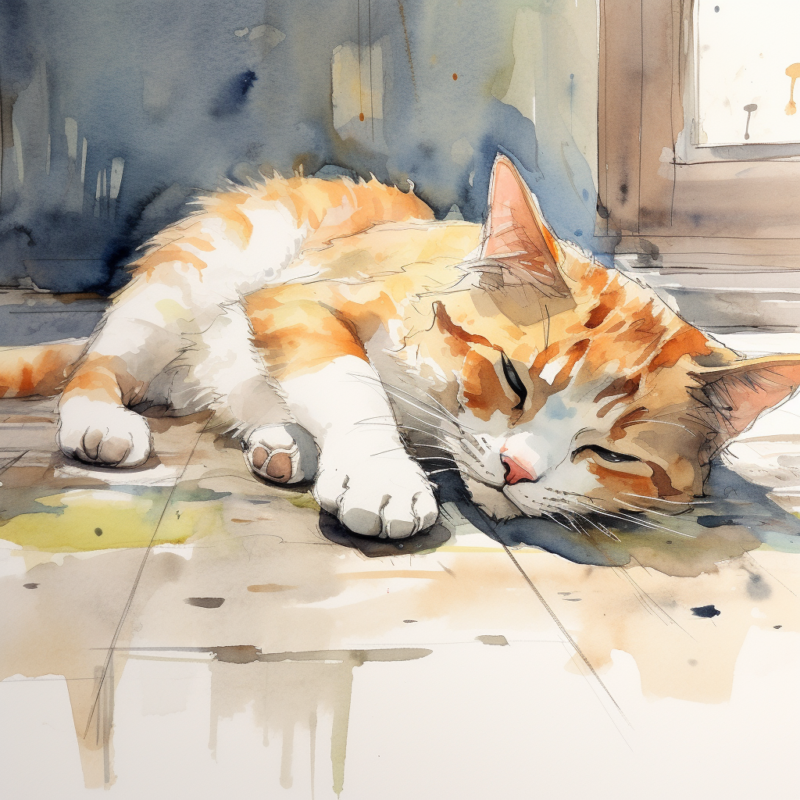
- Cardiogenic Respiratory Distress: In this case, heart diseases lead to fluid buildup within the lungs (pulmonary edema) or around the lungs (pleural effusion), resulting in respiratory distress.
- Systemic/Non-respiratory Causes: In some cases, non-respiratory problems can lead to apparent respiratory distress. This can include severe anemia, which decreases the oxygen-carrying capacity of the blood, or metabolic disorders like acidosis.
Each of these categories includes several possible underlying causes. The appropriate treatment and prognosis will depend on the specific cause of the respiratory distress, so a timely and accurate diagnosis is critical.
Poisoning/Toxicity
Poisoning or toxicity represents a grave and frequently life-threatening cat emergency when cats consume, inhale, or come into contact with detrimental substances. Due to their grooming habits, cats often run into danger when they step into or brush up against harmful substances and then lick them off their fur.
Common substances that can lead to toxicity in cats encompass a wide range, which includes, but is not limited to:
- Certain plants: Lilies, poinsettias, and mistletoe, for instance, are plants that can cause severe reactions if a cat has eaten any part of them.
- Human Foods: Certain foods that we consume, like chocolate, onions, garlic, alcohol, and caffeine, are toxic to cats and can cause significant health issues.
- Artificial Sweeteners: Xylitol, a common sweetener found in many human foods, can be highly toxic to cats.
- Human Medications: Cats can experience severe reactions to medications meant for humans, such as acetaminophen and ibuprofen.
- Pesticides and Rodenticides: These can be deadly to cats if ingested or even if they come into contact with the skin.
- Antifreeze: Just a small amount can be lethal to cats.
- Cleaning Supplies: Certain types of these can be toxic if ingested or if a cat comes into contact with them.
- Dog Flea and Tick Products: These are designed for dogs and can harm cats.
When a cat experiences potential poisoning, they need immediate attention from an emergency veterinarian. If your cat shows signs of an allergic reaction or other unusual behavior, you may need to contact the animal poison control center for guidance. The affected cats may present a variety of symptoms, depending on the substance involved and the amount consumed or inhaled.
Gastrointestinal Emergencies
Gastrointestinal emergencies in cats refer to conditions impacting the digestive tract that may stem from various causes. These situations are critical and necessitate immediate veterinary services. The following are some frequently observed gastrointestinal emergencies:
- Obstruction from Foreign Bodies
This condition arises when a cat consumes an item that fails to pass through its digestive system. These objects might include a toy, string, hair tie, or clothing. Cats experiencing this may display signs like vomiting, a sudden lack of appetite, and abdominal discomfort. Serious complications, such as intestinal wall perforation, can occur without treatment.
- Acute Gastroenteritis
Gastroenteritis involves the inflammation of the stomach and intestines, which may result from consuming spoiled food, parasites, infections, or underlying diseases. Cats with severe gastroenteritis often show signs like vomiting, diarrhea, abdominal discomfort, and lethargy.
- Pancreatitis
Pancreatitis, or the inflammation of the pancreas, can occur due to multiple factors, including trauma, infection, or certain cat medications. Cats may exhibit loss of appetite, vomiting, and abdominal discomfort in response to this condition.
- Hepatic Lipidosis
This liver disease is frequently related to anorexia or a cat not eating. When the cat’s body begins to use fat reserves for energy, the liver can be overwhelmed by fat, leading to dysfunction. Signs your cat displays depend on the disease progression but may include vomiting, diarrhea, weight loss, and jaundice.
- Gastric Dilatation and Volvulus (GDV)
Also known as bloat, GDV is a severe condition where the stomach fills with gas and sometimes twists on its axis. Cats that appear with a distended abdomen, retching without producing vomit, restlessness, and salivation might be experiencing this condition.
- Intense Diarrhea
Severe, sudden diarrhea is especially dangerous in kittens, older cats, or those with pre-existing health conditions, as it can rapidly result in life-threatening dehydration and electrolyte imbalances.
Treatments for these conditions can range from cat medications and supportive care to cat surgery, contingent on the underlying cause and severity. Cat anesthesia may be required for more invasive procedures. Cat owners need to monitor their pets for signs of these conditions closely. Sometimes, they may need to force their cat to eat or drink. Emergency attention should be sought immediately if they suspect their cat may be experiencing a gastrointestinal emergency.
Seizures
A seizure is a sudden, uncontrolled burst of excessive or synchronous neuronal activity in the brain, affecting how a cat appears or behaves. Seizures can manifest in many ways, from a subtle momentary loss of awareness or staring spell to full-blown convulsions involving the entire body.
The occurrence of seizures is a medical emergency in cats for several reasons:
- Underlying Conditions: Seizures can be symptomatic of serious neurological conditions such as epilepsy or indicate systemic diseases such as liver or kidney disease. They can also occur due to metabolic imbalances, brain tumors, infections affecting the central nervous system, or exposure to toxins.
- Potential for Harm: During a seizure, a cat may lose control over its body and can inadvertently harm itself – for example, by falling from a height or knocking into objects.
- Status Epilepticus: There’s a risk that seizures might not stop on their own or recur quickly without the cat regaining consciousness in between, a life-threatening condition known as status epilepticus. This emergency requires immediate veterinary intervention to halt the seizures and provide supportive care.
Cardiac Emergencies
Cardiac emergencies involve life-threatening situations related to heart conditions. Such emergencies can stem from heart disease or systemic disorders impacting heart functionality. Common pet emergencies in the cardiac category include congestive heart failure, cardiomyopathy, heartworm disease, and cardiac arrhythmias, among others.
Cardiac emergencies raise immediate concern for cats due to several reasons:
- Multiple Organ Failure: The heart pumps blood throughout the body, transporting oxygen and nutrients to all cells and tissues. Any disruption in the heart’s ability to perform this vital function can lead to organ failure due to the deprivation of oxygen and nutrients. For example, if a cat has severe heart disease, organ failure can be a consequence.
- Fluid Build-up: Some cardiac emergencies, such as congestive heart failure — one of the two most common causes of heart disease in cats — can lead to the accumulation of fluid in the lungs (known as pulmonary edema) or around the lungs (pleural effusion), causing severe breathing difficulty and labored breathing.
- Abrupt Death: Certain cardiac conditions can lead to sudden death if not promptly treated. For instance, specific types of cardiomyopathy can cause sudden cardiac arrest.
- System-Wide Effects: Numerous heart conditions don’t just affect the heart; they also have systemic effects, meaning they can influence the entire body. For instance, blood clots are a frequent complication of some heart diseases and can result in aortic thromboembolism, a painfully life-threatening condition.
Given the serious consequences of these medical emergencies, any suspicion of a cardiac emergency in a cat calls for immediate veterinary attention. This approach allows for an urgent diagnosis and the initiation of potentially life-saving treatment.
Eye Emergencies
Cat eye problems are considered emergencies due to the sensitive and vital nature of the eyes. Eye conditions can cause severe pain and discomfort, and prompt treatment can provide immediate relief, reducing the stress and pain experienced by the cat. Many eye conditions can cause irreversible damage to the eye’s structures, leading to permanent vision loss if not treated immediately. Quick action can thus decide between a temporary issue and a lasting impairment.
Further, eye problems can increase the risk of severe infections. If an issue like a corneal ulcer is left untreated, it could allow infections to spread to other parts of the body, posing a life-threatening risk. Moreover, eye problems can sometimes be the symptom of underlying systemic diseases. Immediate attention to these issues can lead to diagnosing and treating these potentially serious conditions. Given their rapid progression and the potential risks involved, eye problems in cats should always be treated as potential emergencies.
Heatstroke
Heatstroke, also known as hyperthermia, is a serious and potentially fatal condition in cats. It occurs when a cat’s body temperature rises significantly above its normal range, typically due to prolonged exposure to high ambient temperatures, insufficient drinking water, or being trapped in an enclosed space without adequate ventilation, such as a car, on a hot day. Unlike humans, cats do not sweat through their skin to cool down and cannot compensate for heat through panting. Therefore, cats are particularly susceptible to heatstroke.
Heatstroke is considered an emergency because it can lead to multiple organ dysfunction, including brain, heart, and kidney damage. This organ damage can occur rapidly, often within minutes to hours. Moreover, the effects of heatstroke can continue to worsen even after the cat has been removed from the hot environment and the body temperature has returned to normal due to a harmful inflammatory response in the body. Therefore, heatstroke in cats must be treated as a medical emergency. Immediate veterinary care is required to stabilize the cat, lower its body temperature safely, and address any organ dysfunction or other complications.
Remember, these emergencies can vary greatly in nature and severity, and every situation can be unique. The best way to navigate such scenarios is to keep your vet’s number on speed dial and educate yourself about basic feline first aid.
What Should You Do During an Emergency?
Managing emergencies as a pet owner requires calm, prompt action and knowledge of the proper steps to take to ensure the safety and health of your pet. Here’s a general guide on what pet owners should do during various emergencies:
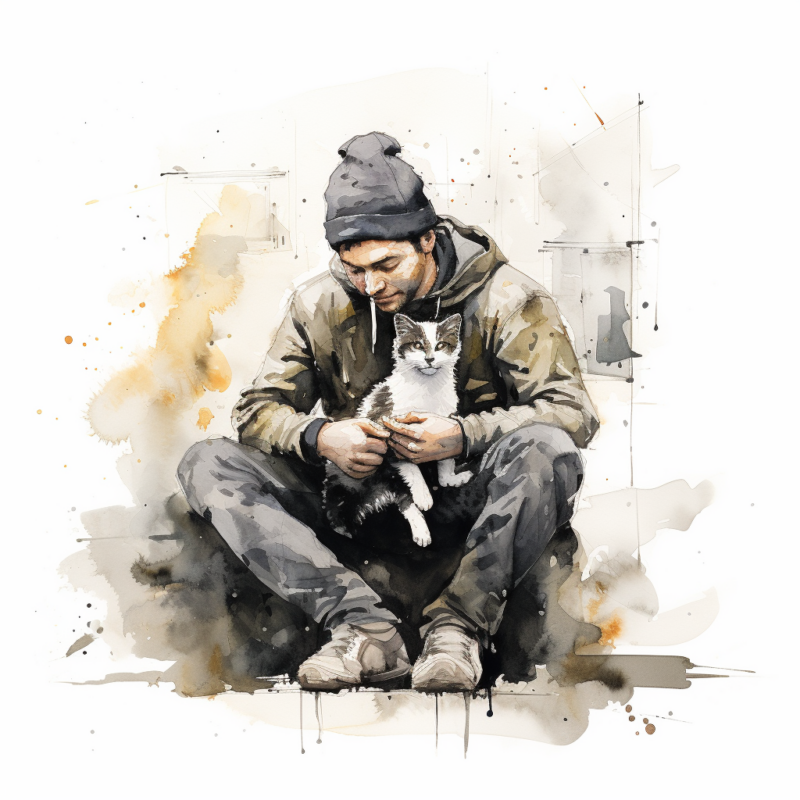
- The first and foremost thing to remember during any emergency is to stay calm. Your pet can sense your stress, which may increase their anxiety levels. Remaining calm will also allow you to think more clearly and take the necessary actions more effectively.
- Quickly assess your pet’s situation and condition. Note any visible signs of injury, distress, or abnormal behavior.
- If you’re equipped, provide first aid. This could include stopping bleeding with a clean cloth, bandaging wounds, or gently wrapping a frightened or stressed pet in a blanket. Remember that a scared and injured pet may behave unpredictably, so approach cautiously to avoid causing further distress or getting bitten or scratched.
- If your vet advises you to bring your pet in, do so as gently as possible. For cats and small animals, a carrier may be the safest method of transport. For larger dogs, a blanket can be used as a makeshift stretcher.
- Contact your vet or an emergency animal hospital after providing immediate first aid. Describe the situation clearly and follow their advice. They may instruct you to bring your pet in immediately or offer guidance on further steps you can take at home.
- Follow the advice of your vet or emergency animal hospital personnel closely, whether that involves administering medication, changing your pet’s environment, or going in for an emergency visit.
Remember, during any emergency; the priority should be getting your pet the appropriate help they need as quickly as possible. Always have your vet’s contact number readily available, and be familiar with the location of the nearest 24/7 emergency animal hospital. Planning ahead and being prepared can make a significant difference when handling pet emergencies.
When to Take Your Cat to the Vet
Recognizing cat emergencies that need immediate veterinary attention can be daunting. However, understanding specific signs will assist you in determining when to seek emergency care for your cat. Here are the key scenarios that necessitate you to take your cat to the vet without delay:
- Difficulty Breathing: If your cat is panting, breathing rapidly or laboriously, or seems to be struggling for air, this is an emergency situation requiring prompt vet attention.
- Unconsciousness or Unresponsiveness: An unresponsive or disoriented cat, or one that loses consciousness, could suffer from severe trauma or a critical condition, such as a stroke. In such instances, seek veterinary care immediately.
- Seizures: An initial seizure or recurring seizures in your cat indicate a need for urgent veterinary assessment.
- Severe Pain or Distress: Signs of significant pain include aggressive behavior, seclusion, lethargy, loss of appetite, and vocalization. A sudden change in cat nutrition can also be a sign of discomfort.
- Major Trauma: This includes circumstances like being hit by a car, falling from a substantial height, or experiencing a severe bite wound. Blood loss from these injuries also necessitates immediate medical intervention.
- Difficulty Urinating: Particularly in male cats, trouble urinating can be a sign of a life-threatening urinary blockage. Symptoms like crying in the litter box, frequent litter box visits, bloody urine, or straining to urinate should prompt you to see a vet.
- Persistent Vomiting/Diarrhea: Continuous vomiting or diarrhea, especially if blood is present or your cat seems unwell, demands immediate vet attention.
- Abnormal Heart Rate/Rhythm: A heart rate that is too rapid, too slow, or irregular can indicate a serious, life-threatening condition.
- Ingestion of Toxins: If your cat has consumed a toxic substance like specific plants, human foods, or chemicals, they need immediate veterinary attention.
- Sudden Collapse or Difficulty Walking: These can be signs of various serious conditions, including cardiac diseases or neurological disorders.
While this list is not exhaustive, it is an essential guide in cat emergencies that need immediate attention. Cats may develop various symptoms, so if you’re uncertain, you should check with your veterinarian or a local emergency clinic for advice. Always remember that it’s safer to err on the side of caution regarding your pet’s health.
Prevention of Emergencies in Cats
Preventive measures vets take to avoid common emergencies in felines typically revolve around regular check-ups and health maintenance, education for pet owners, and certain prophylactic treatments. Here are some of the key measures:
- Regular Check-ups: Regular veterinary check-ups are essential to maintain a cat’s health. These check-ups often include a physical examination, dental check, and routine blood work to detect potential health issues before they become severe.
- Vaccinations: Routine vaccinations protect cats from infectious diseases that can lead to emergencies.
- Parasite Control: Regular deworming and flea/tick control can prevent many health issues that can lead to emergencies.
- Spaying/Neutering: This prevents unwanted litter and several health problems that can lead to emergencies, such as uterine infections and certain types of cancers.
- Diet and Weight Control: Vets often guide proper feeding and exercise to prevent obesity, which can lead to various health issues, including diabetes and arthritis.
- Dental Care: Regular dental check-ups and cleanings can prevent severe dental disease, which can cause pain, tooth loss, and other health problems.
- Educating Pet Owners: Veterinarians provide advice and resources on potential hazards in the home (toxic plants, chemicals), the importance of not allowing cats to roam freely outdoors, and signs of illness to watch for that could indicate an emerging issue.
- Geriatric Care: Older cats may require special care, including more frequent vet visits and screenings for conditions like kidney disease and hyperthyroidism, which are common in older cats.
- Behavioral Consults: If a cat is showing signs of stress, anxiety, or behavioral issues, a vet might provide advice or refer the owner to a behaviorist to prevent these issues from escalating into more serious problems.
By following these preventive measures, many common emergencies can be averted, increasing the chances of a longer, healthier life for the cat.
Frequently Asked Questions
Disclaimer: The information provided on this veterinary website is intended for general educational purposes only and should not be considered as a substitute for professional veterinary advice, diagnosis, or treatment. Always consult a licensed veterinarian for any concerns or questions regarding the health and well-being of your pet. This website does not claim to cover every possible situation or provide exhaustive knowledge on the subjects presented. The owners and contributors of this website are not responsible for any harm or loss that may result from the use or misuse of the information provided herein.

